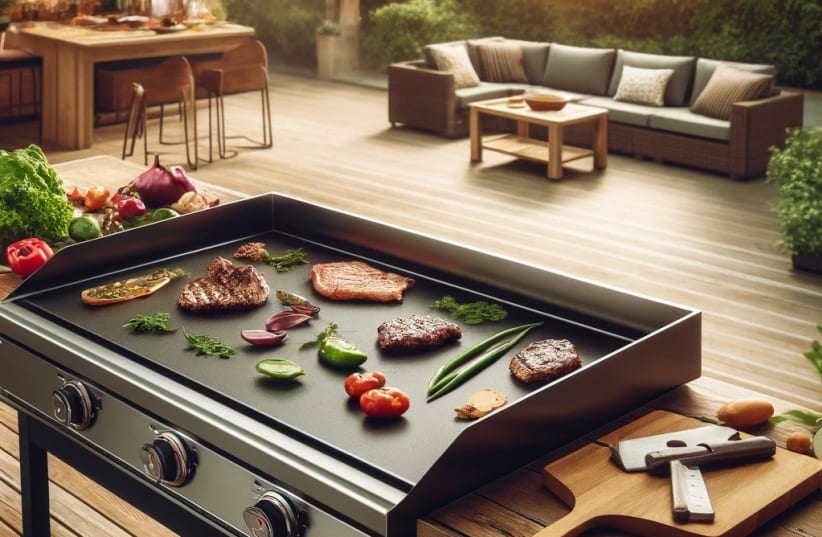For the home griddle enthusiast, achieving the perfect sear – that coveted caramelized crust that seals in flavor and juices – is a point of pride. Usually constructed from cold-rolled steel, outdoor griddles need to be seasoned for full effectiveness. This seemingly simple process creates a protective layer that not only enhances cooking performance but also extends the lifespan of your griddle.
Why Season? The Science Behind the Sizzle
Seasoning your outdoor griddle is akin to creating a non-stick barrier. During the initial seasoning process, oil polymerizes on the griddle's surface, filling microscopic pores and creating a slick, almost plastic-like layer. This layer:
Promotes even heat distribution: A seasoned griddle conducts heat more uniformly, preventing hot spots that can burn your food.
Enhances food release: The non-stick properties of a seasoned griddle make flipping delicate items like fish or burgers a breeze.
Boosts Flavor: The Maillard reaction, responsible for browning and caramelization, occurs more readily on a seasoned surface, resulting in tastier food.
Protects the griddle: Seasoning acts as a barrier against rust, extending the life of your outdoor griddle.Seasoning: A Step-by-Step Guide
Here's how to properly season your outdoor griddle:
1. Clean Up Your Canvas: Start with a clean, dry griddle. Wash it with warm soapy water and a non-abrasive sponge to remove any manufacturing residue. Rinse thoroughly and dry completely with a clean towel.
2. Choose Your Weapon: Select an oil with a high smoke point, like canola, vegetable, or avocado oil. Avoid using olive oil, as its low smoke point can burn during the seasoning process.
3. The Oil Bath: Pour a generous amount of oil onto the griddle surface. Using a clean paper towel or heat-resistant mitt, spread the oil evenly across the entire surface, ensuring it reaches the edges and corners.
4. Heat It Up: Turn your griddle to medium-high heat (around 400°F to 500°F). As the griddle heats, the oil will begin to smoke. This is normal!
5. The Polymerization Process: Let the griddle heat for 15-20 minutes, allowing the oil to smoke and polymerize onto the surface. You may notice a slight color change as the oil starts to bond with the metal.
6. Wipe Down (Not Out): Turn off the heat and let the griddle cool slightly. Using a clean paper towel, wipe off any excess oil. The surface shouldn't feel greasy but rather have a slightly tacky feel.
7. Repeat for Reinforcement: Repeat steps 3-6 two to three more times for a stronger seasoning layer.
8. The Big (Seasoned) Kahuna: After the final coat, let the griddle cool completely.
Maintaining the Magic: Seasoning Upkeep Tips
Just like a well-maintained cast iron skillet, your seasoned griddle requires some TLC:
Post-Cook Cleaning: After each use, let the griddle cool slightly. Scrape off any food residue with a metal spatula. While soap and water are okay for occasional deep cleaning, avoid using harsh detergents or abrasive scrubbers, as these can damage the seasoning.
The Post-Cook Oil Rub: After cleaning and drying the griddle, apply a thin layer of oil to maintain the seasoning. This quick rub-down protects the surface and adds another layer of seasoning over time.
Embrace the Smoke: Don't be afraid to cook fatty foods like burgers or sausages on your seasoned griddle. These naturally release oils that contribute to the seasoning over time.
The Takeaway: A Seasoned Griddle is a Happy Griddle
By following these simple steps, you can transform your outdoor griddle into a non-stick cooking surface, ready to deliver perfectly seared food and countless delicious memories. Remember, a seasoned griddle is an investment that rewards you with years of flavorful cooking. So, turn up the heat, embrace the sizzle, and unlock the full potential of your outdoor griddle.

